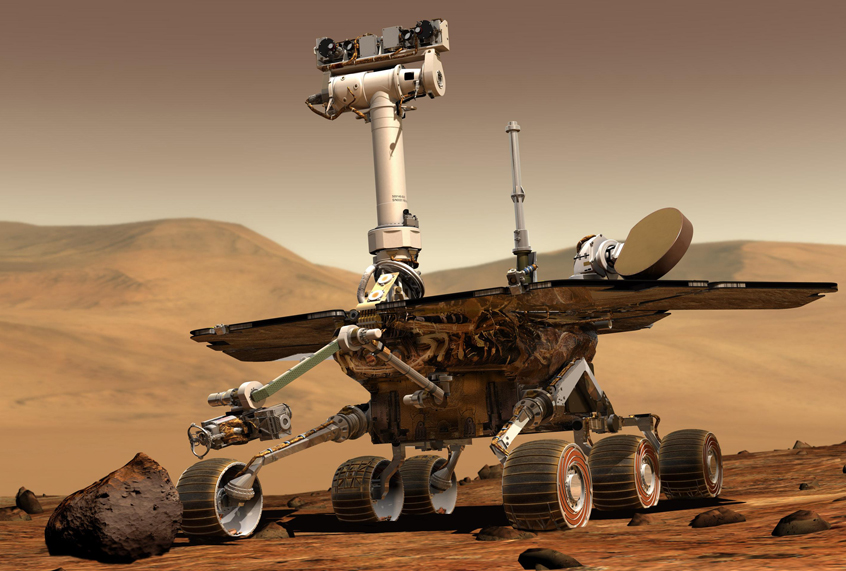The weather on Mars is still frightful — which doesn’t bode well for NASA’s solar-powered Opportunity rover, which has been stranded amid a planet-wide dust storm that threatens to put the 15-year-old rover out of commission.
On Wednesday, NASA gave an update on Opportunity’s dire situation, stating that the Martian dust storm has actually grown in size. The news follows an agonizing week in which Opportunity hasn’t phoned home, meaning its battery levels are likely too low. The beloved rover, which enthusiasts and scientists call “Oppy” for short, has yet to make contact with scientists to let them know it is in an operative condition amid the storm.
“As of Tuesday morning, June 19, the Martian dust storm had grown in size and was officially a ‘planet-encircling’ (or ‘global’) dust event,” NASA’s status report stated. “The storm has starkly increased dust at Gale Crater, where NASA’s Curiosity rover is studying the storm’s effects from the surface.”
“There still was no signal received from NASA’s Opportunity rover, despite efforts to listen in case it’s coming out of sleep during its fault window — the period of time when it attempts to communicate,” the update added.
In case you are not up to speed with Mars’ planet-encircling dust storm, the rare weather event has put Opportunity in an inopportune position. The rover, which touched down on Mars in January 2004, receives its power from the sun—unlike the car-size Curiosity rover, which is powered by a plutonium radiothermal generator, or RTG. Last week, as the storm blackened out the sun, NASA noted that Opportunity’s power supply dropped steadily: from 645 watt-hours, to 345, and finally to merely 22 watt-hours — “little more than what a large iPhone’s battery holds,” as my colleague Keith A. Spencer noted.
NASA said in its Wednesday update that the storm is similar in scale to one that Viking I, one of the first of two spacecrafts sent to Mars as part of NASA’s Viking program, observed in 1977. However, it is not as big as the 2007 storm that Opportunity survived. Indeed, during that storm, Opportunity’s future was also temporarily in doubt.
“A recent analysis of the rover’s long-term survivability in Mars’ extreme cold suggests Opportunity’s electronics and batteries can stay warm enough to function,” NASA said in its update. “Regardless, the project doesn’t expect to hear back from Opportunity until the skies begin to clear over the rover. That doesn’t stop them from listening for the rover every day.”
Even if Opportunity is lost this year, it will be remembered as an astounding success. The little rover has overstayed its planned 90-day mission by almost 15 Earth years. Its twin, Spirit, ran into complications in 2009 and ceased communications in 2010. Its history of persevering in the face of danger has kept many optimistic about Opportunity’s chance at survival.
Bill Nelson, chief of the Opportunity mission’s engineering team at NASA’s Jet Propulsion Laboratory, said in an interview with Mashable that they were hopeful the rover will survive.
“It’s a bit scary — we like to hear from our rover,” he told Mashable. “I’m hopeful that we may be able to recover.”


